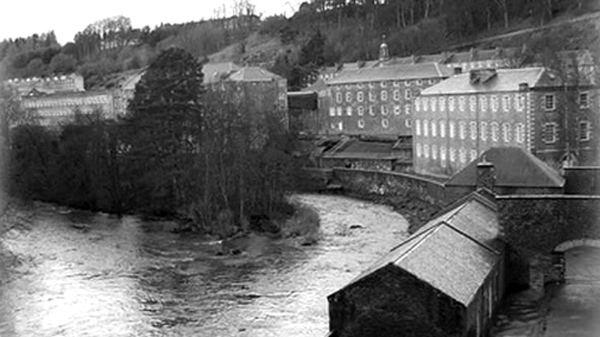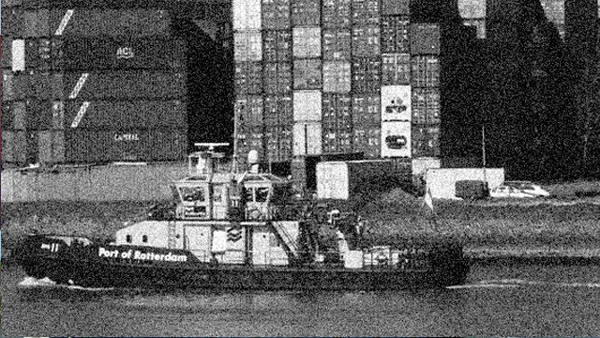Through your eyes
With this activity there are no actual films to watch. Your groups will be reading through summaries of fictitious scenarios. Students will then use skills of empathy to produce responses to the scenarios from the points of view of different people.
Teacher's preparation
Print out the pdf document which includes four work sheets, each containing:
- A scenario
- A list of three characters who will be watching their film
- Generic guideline tips to help develop the character of each viewer
How to do this activity
Split the class into four groups.
Stage one
Give each group a film scenario to look at and ask one person to read it aloud to the rest of their group.
Stage two
- Subdivide each group into three.
- Give each of these one of the 'viewers' from the list attached to their scenario. This is the person who is going to see their film.
- Ask them to create a short biography of this person, using the guideline questions to help them.
Stage three
- Now ask them to imagine their character has been to see the film.
- What is their immediate reaction? Fact or Fiction?
- Are there grey areas; is it harder to define than that?
- Even if they don't believe it to be true, are there ways it might still influence them?
- Why? Or why not?
- Is there some truth in even the most imaginative of stories?
- Finally, ask them to compare their three characters. How does the reaction to the film vary between each of the viewers?
Use the share & discuss section to help explore this in more detail.
Students must not worry that their film is fictitious. They should use it as creatively as they like and allow themselves to embelish their story, so as to explore fully the characters' reactions.
1 - The disaster movie
Scenario
The story is about some American scientists who have worked out a way to extract valuable minerals from beneath the surface of the moon. The minerals would provide a new source of fuel for energy which is badly needed as the Earth is about to run out.
The scientists want to help people, but the organisation that pays for their work is run by greedy people who want to use the minerals for power and money. When they hear that some Russian scientists are also preparing to mine on the moon, the organisation forces the scientists to hurry up their work.
But hurrying causes them to make mistakes and they set off a huge nuclear explosion that threatens to destroy the moon. This would cause disastrous results for all life on Earth.
Desperate to save the world, the American scientists turn to the Russians for help. Together they work on a rescue operation and - just in time - they save the day!
Viewers
- A scientist
- Somebody who believes in conspiracy theories
- The mother of a new baby
2 - Advertisement in a post office
Scenario
Above the counter at the post office is a television screen for customers to watch while they wait in the queue.
An advertisement appears for a kind of bed. The claim is that this is particularly good for people who have bad arthritis.
The advertisement is presented by a television personality who was once very famous as a newsreader and chat show host. He was known as a national treasure and famed for his warm personality and honesty. He only appears on daytime TV from time to time now, but he is still well known to people over a certain age.
In the advertisement he is shown trying to pick up his grandchild, and then frowning in pain, rubbing his back stiffly. He is then shown sleeping on the bed. In the next shot he is laughing happily while he sits on the floor playing with his grandchild.
Viewers
- An elderly lady
- The grown-up son of an elderly lady
- The presenter
3 - The Museum audiovisual
Scenario
In a museum about country life, there is an interactive touch-screen computer. On it are several old black and white photographs showing different scenes of work and life in the countryside in the olden days. There are no dates.
When you touch one of the photographs a cartoon animation appears. Our viewer touches a picture showing the cogs and wheels of the machinery in a mill.
The animation that appears shows a cartoon Miller standing scratching his head over machinery that is not working. He has an idea - an exclamation mark appears over his head! He goes to a bucket and pulls out some black wriggly things. He throws these into the machinery and it starts working.
A brightly coloured text bubble appears with the words 'In some places people used slugs to oil machinery!'
Viewers
- A child on a school trip
- An old man who once worked on a farm
- A tourist from another country
4 - Television documentary
Scenario
Each week this programme carries out a different investigation. The makers pride themselves on breaking news stories and getting headlines. They report on things like bad practice by health and social work professionals but they particularly like exposing crimes.
In this episode they are reporting from the dockland area of a big city. They say they have discovered a gang who are running a smuggling operation. The gang is made up of shift-workers at the dock, and the programme claims they are stealing stock while they unload it from ships, and that they are trading in contraband.
The director has chosen to film shots of dock workers going about their business in the dark, grainy, stuttering style of CCTV footage. He uses lots of high and low angles and long shots where the activity of loading and unloading is seen through the gaps between containers. There are no interviews with any dock workers and the programme cannot reveal its sources for the story.
Viewers
- The friend of a dock worker
- A police detective
- The director
Guidelines to help develop the character of each viewer
- What is this person like?
- What age are they?
- Are they physically fit?
- What would their house be like?
- What do they do?
- What kinds of things do you think they like and dislike?
- What sort of things do they know about?
- What and who do they care or worry about?
- What do they believe in?
- What kind of things do they watch and how often?
- What mood are they in when they see this?
Not all of these are useful for every character, and of course, you can think of more yourself!
Don't feel you have to stick to speaking and writing for this activity. The class might find it helpful, as well as fun, to draw what they think their character looks like, or make a collage or mind-map that shows what their interests and preoccupations are. And it might be helpful to the understanding of the film to gather appropriate images, or storyboard likely shots.
Share & discuss
- Does the venue where the film is being shown affect how the viewer reacts? Is it somewhere they expect to find fact or fiction?
- Why are they watching this?
- Have they chosen to watch it, or was it someone else's idea?
- What are they expecting from it?
- Do they trust the people in the film?
- Is the narrative believable? Why?
- How does the way it is told affect the viewer?
- Are there other clues to whether it is fact or fiction - sound, text on the screen, graphics, voiceovers?
- And of course, how does the film fit in with their own experience of life and the aspects of the biography that the group has created?
- Finally - what do they want to believe?
Example based on scenario 1 (mother of a new baby)
The group decides she thinks it's fiction!
After all she went to the cinema for a bit of excitement and she knew what the film was about beforehand. At the end she's still alive and life goes on as normal. And there is no message on the screen to say it's based on a true story!
However, she cares about her new baby and worries about his future. She knows that fossil fuels are running out and that there aren't enough wind farms to supply all the energy we use. She also believes the governments of the world are trying to find solutions to this problem, though she hasn't heard anything about them planning to mine on the moon.
She does know that the moon affects life on Earth - the tides, for example, follow the cycle of the moon. So if there were to be such an accident it would be very serious.
Taking all this into account she leaves the cinema thinking it was a good plot, well researched, and although she doesn't believe it, it might just have left a little bit of worry in her.



